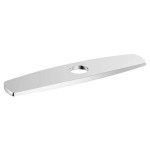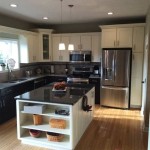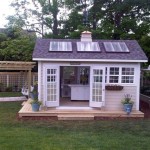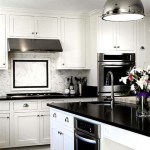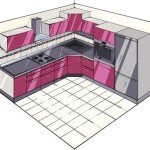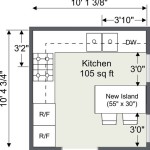Easiest Kitchen Flooring To Install: A Comprehensive Guide
Selecting new flooring for a kitchen is a significant undertaking, balancing aesthetics with practicality. The kitchen is typically a high-traffic area, prone to spills and requiring durable, easily cleaned surfaces. Installation can be a major factor in the decision-making process, especially for homeowners considering a do-it-yourself project. Therefore, understanding which flooring options offer the easiest installation is crucial. This article examines various types of kitchen flooring, detailing their installation processes and highlighting the features that make them suitable for DIY installation.
Factors influencing the ease of installation include the type of subfloor, the tools required, the complexity of the installation process, and individual skill level. Some materials are inherently more forgiving than others, masking minor imperfections in the subfloor or allowing for easy corrections during installation. This guide provides a comparative analysis to assist in choosing the most appropriate and easily installed kitchen flooring for a variety of needs and experience levels.
Peel-and-Stick Vinyl Tiles: Simplicity and Affordability
Peel-and-stick vinyl tiles represent perhaps the most straightforward DIY flooring option available. These tiles are backed with a pressure-sensitive adhesive, eliminating the need for mortar or specialized tools. The installation process is generally as simple as peeling off the backing paper and adhering the tile to a clean, level subfloor. This characteristic makes it an ideal choice for beginners and those seeking a quick and budget-friendly flooring solution.
Preparation is relatively minimal, requiring only that the existing floor be thoroughly cleaned and, in some cases, primed to ensure adequate adhesion. Any imperfections in the subfloor, such as cracks or unevenness, should be addressed before installation, as they can telegraph through the thin vinyl. The tiles can be easily cut with a utility knife to fit around corners, appliances, and other obstacles. Replacing damaged tiles is similarly simple, requiring only peeling up the old tile and sticking down a new one.
While peel-and-stick vinyl offers ease of installation, it is important to consider its durability and lifespan. It is typically less resistant to wear and tear than other flooring options, such as ceramic tile or hardwood. However, for low-traffic kitchens or those seeking a temporary flooring solution, peel-and-stick vinyl can prove to be a cost-effective and easy-to-install alternative. Furthermore, the aesthetic options are diverse, with styles mimicking wood, stone, and ceramic tiles readily available.
The success of a peel-and-stick vinyl installation hinges on thorough preparation. The subfloor must be completely clean, dry, and free of debris. Avoid installing over cushioned vinyl or floors with existing textures. A floor leveling compound might be needed for uneven subfloors. Priming the subfloor with a vinyl flooring primer can significantly improve adhesion, especially in areas prone to moisture. When laying the tiles, start from the center of the room and work outwards to ensure proper alignment. Roll the entire floor with a floor roller to secure the tiles and eliminate air bubbles. With careful preparation and proper installation techniques, peel-and-stick vinyl tiles can provide a surprisingly durable and attractive flooring option.
Luxury Vinyl Plank (LVP) with Click-Lock Systems: Durable and User-Friendly
Luxury vinyl plank (LVP) has gained popularity in recent years, owing to its durability, water resistance, and ease of installation. Many LVP products utilize a click-lock system, also known as a tongue-and-groove system, which allows planks to be easily connected without the use of adhesives. This floating floor installation simplifies the process and makes it accessible to DIY enthusiasts. The planks simply interlock, creating a seamless and stable surface.
One of the significant advantages of LVP with a click-lock system is its ability to be installed over a variety of subfloors, including concrete, wood, and even existing vinyl flooring, provided the subfloor is relatively level. This reduces the amount of preparation required compared to other flooring options, such as ceramic tile. However, it is still crucial to address any significant imperfections in the subfloor before installation, as they can affect the stability and appearance of the finished floor. A thin underlayment is often recommended to provide cushioning, sound insulation, and to help smooth out minor imperfections in the subfloor.
Cutting LVP planks is generally straightforward, requiring only a utility knife and a straight edge. For more intricate cuts, a jigsaw or miter saw can be used. The planks are typically installed room by room, working from one side of the room to the other. Spacers are used along the walls to allow for expansion and contraction of the flooring material. The last row of planks may need to be cut to fit, and a tapping block and hammer can be used to gently lock the planks into place.
While LVP is more expensive than peel-and-stick vinyl, its enhanced durability and water resistance make it a worthwhile investment for kitchens. It is resistant to scratches, stains, and dents, making it suitable for high-traffic areas and households with pets or children. Furthermore, LVP is available in a wide range of styles and colors, mimicking the look of wood, stone, and tile. The click-lock installation system, combined with its durability and aesthetic appeal, makes LVP a popular choice for DIY kitchen flooring projects.
Before beginning the LVP installation, carefully inspect each plank for any defects. Pre-plan the layout to minimize waste and ensure a visually appealing pattern. Undercut door frames to allow the flooring to slide underneath, creating a clean, professional finish. Regularly check the alignment of the planks during installation to ensure a straight and even floor. Clean up any adhesive or spills immediately to prevent them from drying and becoming difficult to remove. With attention to detail and proper installation techniques, LVP can provide a durable, attractive, and easily installed kitchen flooring solution.
Sheet Vinyl: Seamless and Water-Resistant
Sheet vinyl flooring offers a seamless and water-resistant surface, making it a practical choice for kitchens. While installing sheet vinyl can be more challenging than peel-and-stick tiles or LVP planks with click-lock systems, it is still a viable option for experienced DIYers. The primary advantage of sheet vinyl is its ability to cover an entire room without any seams, providing superior water protection and a clean, uniform appearance.
The most critical aspect of sheet vinyl installation is accurate measurement and cutting. The sheet vinyl must be cut to fit the exact dimensions of the room, accounting for any irregularities in the walls or corners. This requires careful planning and precise measurements. A template of the room may be necessary to ensure an accurate fit. Once the sheet vinyl is cut, it is typically glued down to the subfloor using a vinyl flooring adhesive.
The subfloor must be perfectly smooth and level before installing sheet vinyl. Any imperfections will be visible through the thin vinyl, so it is essential to fill any cracks or holes and sand down any rough spots. An underlayment may be necessary to provide a smooth and level surface. The adhesive must be applied evenly across the subfloor to ensure proper adhesion of the sheet vinyl. A floor roller is used to press the vinyl into the adhesive and eliminate air bubbles.
While sheet vinyl provides excellent water resistance and a seamless appearance, its installation can be more demanding than other flooring options. It requires precise measurements, accurate cutting, and careful adhesion. However, for homeowners with experience in flooring installation and a keen eye for detail, sheet vinyl can be a cost-effective and durable kitchen flooring solution. It is available in a wide range of colors, patterns, and textures, allowing for a variety of design options.
When working with sheet vinyl, use a sharp utility knife and replace the blade frequently to ensure clean cuts. Consider practicing on a scrap piece of vinyl before cutting the full sheet. Use a notched trowel to apply the adhesive evenly and avoid applying too much adhesive, which can cause the vinyl to bulge. Carefully align the sheet vinyl with the walls and corners before pressing it into the adhesive. Work from the center of the room outwards to eliminate air bubbles. Once the adhesive has dried, trim any excess vinyl along the edges and install baseboards to conceal the edges and provide a finished look. With careful planning and precise execution, sheet vinyl can provide a seamless and waterproof kitchen floor.
Laminate Flooring: Budget-Friendly with Floating Installation
Laminate flooring is a multi-layer synthetic flooring product fused together with a lamination process. It simulates wood, stone, or tile, and is often chosen for its affordability, durability, and ease of installation. Like LVP, laminate flooring typically uses a click-lock or tongue-and-groove system, allowing for a floating installation. This means the floors are not nailed or glued to the subfloor, but rather connected to each other.
The installation process for laminate flooring is relatively straightforward, making it a suitable option for DIY projects. However, it is crucial to have a level and clean subfloor. Minor imperfections can be addressed with an underlayment, which also provides cushioning, sound insulation, and moisture protection. Laminate is more susceptible to water damage than LVP, so it's vital to address any potential moisture issues in the subfloor prior to installation.
Similar to LVP, laminate planks are easy to cut using a saw or a laminate cutter, and they are designed to interlock quickly. Starting at one wall, planks are connected end-to-end and row-to-row. Spacers are used along the walls to allow for expansion and contraction, and the last row of planks are typically cut to fit the remaining space. Baseboards and transition strips are installed after the flooring is complete to cover the expansion gap and create a finished look.
Despite its ease of installation and affordability, laminate flooring has some drawbacks. It is not as water-resistant as LVP or sheet vinyl, and prolonged exposure to moisture can cause it to swell or warp. It is also more susceptible to scratches and dents than some other flooring options. However, for kitchens that are not prone to spills or excessive moisture, laminate flooring can be a cost-effective and aesthetically pleasing choice.
Before installing laminate flooring, acclimate the planks to the room for at least 48 hours to allow them to adjust to the temperature and humidity. Choose a high-quality underlayment with a moisture barrier to protect the laminate from moisture damage. When locking the planks together, use a tapping block and hammer to avoid damaging the edges. Regularly check the alignment of the planks during installation to ensure a straight and even floor. Clean up any spills immediately to prevent them from seeping into the seams. With careful preparation and proper installation techniques, laminate flooring can provide a durable, attractive, and easily installed kitchen flooring solution.

What S The Easiest Flooring To Install

Budget Friendly Kitchen Floors 6 Affordable Updates

5 Inexpensive Kitchen Flooring Option Lx Hausys

Kitchen Flooring Installation Easiest Material To Install Lx Hausys
:max_bytes(150000):strip_icc()/inexpensive-kitchen-flooring-ideas-1315016-06-cb65dc0738ad4a4e843c05a274f17c12.jpeg?strip=all)
4 Inexpensive Options For Kitchen Flooring
:max_bytes(150000):strip_icc()/inexpensive-kitchen-flooring-ideas-1315016-01-f18479366fe9430f886ae0ce3c9419ec.jpeg?strip=all)
4 Inexpensive Options For Kitchen Flooring
:strip_icc()/102769760-94fa29c705af466b8b5de467ebea66f5.jpg?strip=all)
9 Affordable Kitchen Flooring Ideas That Don T Sacrifice Style

Diy Flooring How We Changed Our Kitchen In 3 Days For Less Than 400 Your Home Renewed

13 Ideas For Upgrading Your Kitchen Floors Extra Space Storage

5 Inexpensive Kitchen Flooring Option Lx Hausys

